
PUMPA - SMART LEARNING
எங்கள் ஆசிரியர்களுடன் 1-ஆன்-1 ஆலோசனை நேரத்தைப் பெறுங்கள். டாப்பர் ஆவதற்கு நாங்கள் பயிற்சி அளிப்போம்
Book Free DemoThe sense organs are specialized organs that help in perceiving world around us. They serve as the windows to the outside the world. There are five sense organs in the body. They are:
- Eyes
- Ears
- Nose
- Tongue
- Skin
These sense organs make us aware of our surroundings. One can hear, smell, taste and feel only through these sense organs. These are the organs that govern the association and interaction of humans with the environment.
Eyes
The eyes are the organs that help to see and observe things around us. For example, it helps to view the colour, shape, size, whether the object is near or far, moving or at rest, etc.
The eyelids and the eyelashes protect the eyes. The three main parts of the eyes are the cornea, iris and pupil. The iris in the eye is the coloured part that controls the pupil's size and diameter, which directly affects the amount of light entering the eyes.
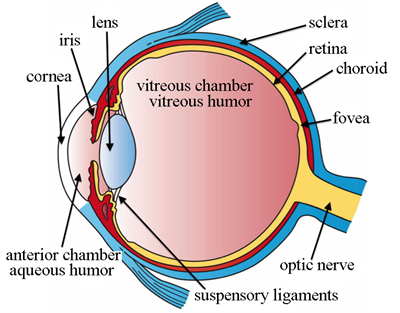
Anatomy of eye
Ear
It is the sense organ that helps to hear and differentiate the sounds around us. The ear is divided into three main sections. They are the inner ear, outer ear and middle ear.
The outer ear in human beings is made up of an external flap called the pinna. Along with perceiving sound, the ear also helps maintain the balance of the body when a person is running, walking or climbing.
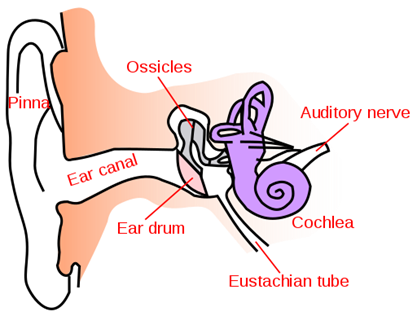
Internal structure of ear
Tongue
It is a muscular organ in the mouth that helps perceive various tastes and flavours present in the food we eat. The tongue consists of taste buds that help in sensing the different flavours. It also plays a role in speech.
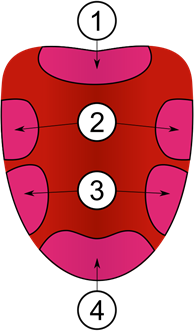
From top to bottom: Bitter, Sour, Salt, Sweet
Nose
It is an olfactory organ that helps in perceiving the different smells. It is a sense organ that also aids the sense of taste.
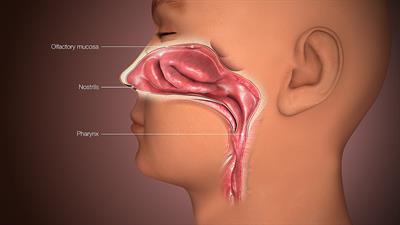
Structure of human nose
Skin
It is the largest sense organ of the body as it covers the entire body. The organ helps to feel the objects around us by touching to find if the object is hot or cold, smooth or rough, dry or wet, hard or soft. Skin is the organ that covers the body and protects it from germs. It also plays a role in keeping the body moist and regulating the body temperature.
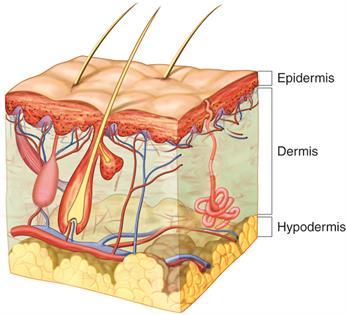
Anatomy of skin
Functions of the Skin
- Skin serves as an effective barrier against infection by microbes and pathogens.
- It is the organ that helps us to synthesize vitamin D using sunlight.
How to take care of the sense organs?
- Avoid reading in very bright light or very dim light and also in a moving vehicle.
- Avoid overexposure of the eyes to the screens of television, computer, laptop and mobile phones for a long time.
- Do not rub your eyes harshly.
- At least two to three times a day wash your eyes gently with clean water.
- Protect the ears from hard blows.
- It is important that one should never try to prick ears with toothpicks or hairpins as these are dangerous practices which may puncture the eardrum and cause an ear infection.
- It is mandatory to bath at least once a day so that the skin is clean and fresh.
Reference:
https://upload.wikimedia.org/wikipedia/commons/thumb/4/40/Ear-anatomy-text-small-en.svg/512px-Ear-anatomy-text-small-en.svg.png
https://www.flickr.com/photos/rosenfeldmedia/10910331343
https://courses.lumenlearning.com/cuny-csi-ap-1/chapter/integumentary-structures-and-functions/
https://upload.wikimedia.org/wikipedia/commons/thumb/e/e7/Taste_buds.svg/512px-Taste_buds.svg.png
https://upload.wikimedia.org/wikipedia/commons/thumb/8/8c/3D_Medical_Animation_Nose_Top_section.jpg/1024px-3D_Medical_Animation_Nose_Top_section.jpg
https://commons.wikimedia.org/wiki/File:Three_Main_Layers_of_the_Eye.png